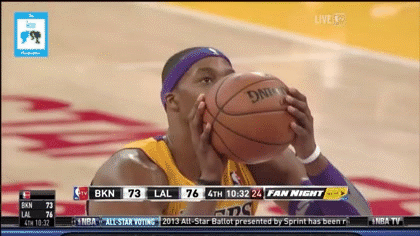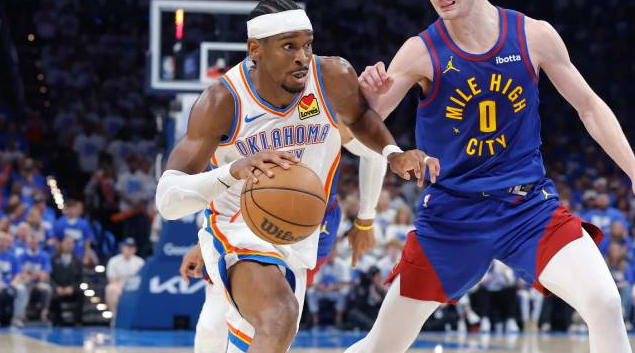The question of whether or not to punt categories in fantasy basketball is like asking the question: How long is a piece of string?
There is no universal, straight-forward, one-size-fits-all answer to this question. The only real answer is: It depends. It depends on what kind of league you're playing in and what the settings are for your league.
If you gathered 20 strangers in a room and asked them who their favorite band was, you'd likely get 20 different answers. If you also gathered 20 different fantasy basketball players and asked them to describe their league type and settings, you'd get an array of different responses.
Fantasy basketball is not a cookie-cutter type of game. It's a highly-customizable experience, with a myriad of league options open to manipulation by the league and its combatants.
So back to the original question: Should you punt categories in fantasy basketball?
It depends on the type of league you are in. More specifically, do you play in a head-to-head format? Or is rotisserie more your style? How about a points league?
Before we go any further, we should give a brief explanation of the term punting.
To punt in fantasy basketball (or fantasy sports in general) is to completely disregard a category when assembling your roster, knowing full well that your squad will not be competitive in that category throughout the season. The idea isn't to be as bad as possible in that category, but rather to make your team stronger in the
The question of whether or not to punt categories in fantasy basketball is like asking the question: How long is a piece of string?
There is no universal, straight-forward, one-size-fits-all answer to this question. The only real answer is: It depends. It depends on what kind of league you're playing in and what the settings are for your league.
If you gathered 20 strangers in a room and asked them who their favorite band was, you'd likely get 20 different answers. If you also gathered 20 different fantasy basketball players and asked them to describe their league type and settings, you'd get an array of different responses.
Fantasy basketball is not a cookie-cutter type of game. It's a highly-customizable experience, with a myriad of league options open to manipulation by the league and its combatants.
So back to the original question: Should you punt categories in fantasy basketball?
It depends on the type of league you are in. More specifically, do you play in a head-to-head format? Or is rotisserie more your style? How about a points league?
Before we go any further, we should give a brief explanation of the term punting.
To punt in fantasy basketball (or fantasy sports in general) is to completely disregard a category when assembling your roster, knowing full well that your squad will not be competitive in that category throughout the season. The idea isn't to be as bad as possible in that category, but rather to make your team stronger in the remaining categories by disregarding the category that is to be punted.
Let's get into the details of these formats, and if you should look to employ a punting strategy.
Points Leagues
This one is fairly straight forward. Due to the nature of points leagues, there are no categories (so to speak), as all contributions are melded into one number, fantasy points. The way your players accumulate those points is inconsequential in the end, so if you play exclusively in points leagues, punting is not a strategy you will need to consider.
Although, I do have one thing to say to people playing only in points leagues. I highly recommend getting involved in a category based league. The level of involvement and satisfaction is multiplied immensely by being intimately involved in a category league. Give it a go, and I doubt you will be disappointed.
Rotisserie Leagues
If you play in rotisserie leagues, the issue of punting is one that is often quite hotly debated. Some are staunchly against it, while others have used it on their way to victory in the past.
While it's not a strategy for the faint-hearted, punting one or at most two categories, can be a viable method of attaining your championship goals.
Let's consider things in a 12-team, nine-category rotisserie (roto) league. The highest score achievable is 108 (which is the sum of 12 teams times nine categories), but securing 12 points in each of the nine categories to earn 108 points isn't realistic. In order to win a league like this, you generally need to be targeting about 75-80 points, which equates to around 8-9 points per category. Let's use 77 points as a benchmark total for winning most 12-team roto leagues.
If you're punting a category, you're likely to earn only one point in the category you're punting, which means you'd have to earn 76 points in the remaining eight categories. That's an average of 9.5 points per category, which is not impossible. What you will have to do is make sure you get maximum points in a few categories. If you're able to finish at the top of three categories for 12 points each, things become a lot more manageable. That would leave 40 points to achieve from the remaining five categories, at an average of eight points per category.
So, if you punt a category, you should aim to win three categories outright, to make up for your punted category only likely to give you one rotisserie point, and then you should be above average in the remaining five categories.
But how do you go about punting?
The most common categories to consider punting are field goal percentage, free throw percentage, and turnovers. The reason those three categories are the most popular to be punted is that the negative contributions a player can make in these three categories is in many ways uncapped, meaning there is no limit to how much damage a player can do to your ranking in these categories.
For points, rebounds, assists, steals, blocks, and three-pointers made, you can only amass positive counting stats in those categories, but for field goal percentage, free throw percentage, and turnovers, a player can continue to take shots and miss them, bringing your team's percentages down, and the player can continue to amass turnovers, dropping you in the rotisserie rankings for that category.
The negative impact of counting stats (points, rebounds, assists, steals, and three-pointers made) is capped at zero. By zero, that means the only way a player can hurt you in those counting categories is by being a bum and not getting any stats in those categories in a given game. If Josh Smith doesn't score or doesn't get any rebounds or blocks, it's annoying, but he isn't hurting you as much he's simply not contributing. For example, if your team has 252 total rebounds on the season, and Smith goes out and doesn't collect any rebounds in one game, he doesn't drop your total number, he just doesn't make it improve it. It's frustrating, but at least the damage is limited.
However, for percentages, there's theoretically no basement. Smith could go out and have a 0-for-30 shooting game. Prior to the game, your team's field goal percentage might be at 48 percent on the season, but after Smith's 0-for-30 game, it would drop, and every game after that, he could continue to hurt your team's field goal percentage with terrible shooting the rest of the season. The same holds true for turnovers. A player can keep racking up turnovers until the coach has had enough. There is no maximum number of turnovers a player can achieve in a game. So the negative contributions a player can have in those categories (FG%, FT% and TOs) has no cap, unlike the other counting stats, where the worst performance is simply not recording any points, rebounds, etc.
The negative effects in these categories (FG%, FT% and TOs), make them the best categories to punt in a rotisserie league. There's even a silver lining about players sucking at percentages and turnovers, because their suckitude in those categories usually drops their value in rotisseries rankings, but if you're only drafting the player for their counting stats (points, rebounds, assists, steals, and three-pointers made), their value to you is much greater than where they'll be available for you to draft, allowing you to draft most of the players on your roster a few rounds later, where they're a great value pick for what you're trying to accomplish by punting the percentages and turnovers.
Last season, the top-10 players who had the biggest negative categorical impacts in 12-team rotisserie leagues were the players listed in the table below.
Player | Statistically Deficient Category | Standard Deviations Below Average |
Dwight Howard | 54.7 FT% | 5.36 |
DeAndre Jordan | 42.8 FT% | 4.80 |
Andre Drummond | 41.8 FT% | 4.33 |
John Wall | 3.6 turnovers | 2.86 |
Stephen Curry | 3.8 turnovers | 2.85 |
J.J. Hickson | 51.7 FT% | 2.76 |
Josh Smith | 53.2 FT% | 2.70 |
Kevin Durant | 3.5 turnovers | 2.68 |
Brandon Jennings | 37.3 FG% | 2.66 |
LeBron James | 3.5 turnovers | 2.41 |
From looking at the table above, you'd assume free throws are the best category to punt, and you'd be right. The problem you can run into, though, is that another owner in your league may also be attempting to punt free throw percentage and will value players in a very similar way to you.

The other category that is interesting to punt is turnovers. In general, players with the ball in their hands will amass more turnovers, so depending on the competitiveness of your league, turnovers is hard to win. If you have one or two managers becoming inactive at the end of the season and not setting their lineups, it would be nearly impossible to earn 12 points in a negative category such as turnovers, because if people aren't setting their lineups, then there's no way for them to collect more turnovers. Their number of turnovers committed will stay low and earn their team a competitive total of turnovers. This is also one of the reasons why experts often recommend only playing in eight-category leagues that don't count turnovers, and it's a big reason why RotoWire has decided to making our primary cheat sheet rankings based on eight-category leagues. We still offer nine-category rankings that account for turnovers, but those rankings are only applicable for rotisserie leagues that force you to account for turnovers, and those rankings that count turnovers have their limitations, as a player like Kawhi Leonard or Terrence Jones, whom records few turnovers gets an absurd boost to their rankings, which is often detrimental and places them too high in the rankings when considering the limited positive contributions they give you in the primary counting stats.
So, in roto leagues, you can win by punting a category, even two, but your plan needs to be executed perfectly with a lot of draft preparation built around targeting the correct type of players who provide deficient numbers in the categories you're punting while contributing great production in the categories you're trying to focus on dominating. This strategy becomes more viable in leagues that are more competitive, and the larger your league is, the easier it is to punt and be victorious. The larger the league, the more thinly spread the talent is, which makes it a lot harder to have a well-rounded team. In a 10-team league, you could try to draft a squad to finish near the top of every category, and it is achievable. However, in a larger 20-team league, your ability to get a well-rounded team is hampered by the player pool. So, with it being hard to get your team near the top of each category in deeper leagues, strategically, it becomes advantageous to punt a category or two to help solidify the remaining six or seven categories you want to try and dominate.
Head-To-Head Leagues
Here is where things get interesting. If you're in a head-to-head league, I'd argue that in order to win your league, you need to punt at least one category. Sometimes, even punting up to four categories, can be the best strategy.
Having a balanced lineup is great in roto, but not mandatory. However, in head-to-head, there really isn't much to gain by being slightly above average in all categories. To qualify for the playoffs, you need to win approximately 55 to 60 percent of the weekly category matchups during the season, so winning most weeks either 5-4 or 6-3 is essential. When you get to the playoffs, to get to the next round, all you need is to win the majority of the categories in that one-week matchup, so eking out a 5-4 victory is all that is required to advance.
There are two stages to punting in head-to-head leagues. There's the initial punt, where you build your team around maximizing your strengths and ignoring your weaknesses. At this stage, I normally look at punting two categories, at most three.
But, I also like to look at my team to try and establish what I call a "second-punt" around the All-Star break. At that time, I look at how my team is performing, as well as the other teams that I am likely to meet in the playoffs, and assuming I'm set to qualify for the playoffs, I'll start to make moves to narrow my focus to the five or six categories that will guarantee me victories against the other contending teams come playoff time. It's essentially just a market correction before the trade deadline. It's an attempt to mold my team in response to how your greatest competition has constructed their team so that you can assure that you'll beat them in a majority of the categories if you have to play them in the playoffs one week.
Constructing a Roster While Punting Specific Categories
One of the major differences in punting in head-to-head leagues versus roto leagues, is that you have more flexibility in which categories you can punt. In roto, you should only consider punting percentages and turnovers, whereas in head-to-head, any category is up for discussion.
You can target big-man stats and punt assists and free throw percentage.
You can play your own version of small ball, foregoing blocks and perhaps rebounds or field goal percentage.
The options for which categories to stack up on and which categories to punt are numerous, and for each group of stats that you choose to punt, there are players who will have a significant rise in value when you stop counting their deficient stats in their value.
Most fantasy leagues still require you to play players in the traditional basketball positions of point guard, shooting guard, small forward, power forward, and center, so finding players at those positions who provide unconventional production in stats that aren't typically associated with their position on the court can really assist you in building a better team for punting certain stats.
Punting Assists and Free Throw Percentage
If you're punting assists and free throw percentage, targeting Goran Dragic, Eric Bledsoe, Avery Bradley, and Patrick Beverley at point guard could be a good strategy, because, a lot of their value come from categories other than those two. Dragic and Bledsoe offer elite production in field goal percentage, points, steals, and three-pointers, while Bradley and Beverley are point-guard eligible players who give you points, three-pointers, low turnovers, and steals. Most leagues require you to fill a point guard slot on your roster, so grabbing these sorts of players, allows you fill that position, while excelling at categories other than assists and free throw percentage.
Punting Blocks and Field Goal Percentage
If you're looking for big men to fill out your roster if punting blocks and field goal percentage, power forward and center eligible players worth targeting are Kevin Love, Carmelo Anthony, Dirk Nowitzki, Thaddeus Young, Channing Frye, Ryan Anderson, Jeff Green, Tobias Harris, and LaMarcus Aldridge. These big men don't derive their value from blocks or from insanely high field goal percentage. Love, Frye, Anderson, and Green hit a good number of three-pointers from the power forward slot, while we all know how good Love and Anthony are at scoring, hitting free throws, and grabbing boards. Aldridge and Harris both provide most of their value from scoring, solid free throw percentage, and rebounding, but their field goal percentage isn't what you'd call great.
Punting Points
An interesting team-building strategy is that of punting points. Points are the most visible fantasy stat. It is the first number mentioned in Sports Center highlights on ESPN each night and is instinctively the first number our eyes are drawn to in the box score. Which is natural, as games are won and lost by the score of the game. In fantasy, however, points is but one of the nine categories that your team is competing in. Completely ignoring the points categories can lead to some wild swings in player valuations and can allow you to grab some steals in the draft. When you ignore points, players who may have rank the the top-20 (when points are removed from the equation), might be available as low as the sixth or seventh round. For example, if you punted points and free throw percentage last season, the top three players based on per-game value were DeAndre Jordan, Anthony Davis, and Andre Drummond. You could easily have had all three of those players on your roster last season, and your team would've been very hard to beat in the categories you were competitive in.
Other guys who get a bump when you punt points are Andrew Bogut, Draymond Green, Anderson Varejao, Josh McRoberts, Ricky Rubio, Danny Green, Wes Johnson, P.J. Tucker, Robin Lopez, and Andre Iguodala.
In Closing
The main reason punting is a successful strategy in head-to-head leagues is that it changes your team's valuations. It allows you to get a strong team in your chosen categories by bucking the draft and ADP trends, which are often based on balanced, nine-category values.
Just remember, when punting categories, the aim isn't to lose that category by as much as possible. The aim is to increase the chances of winning the other categories at the expense of those punted categories.

























